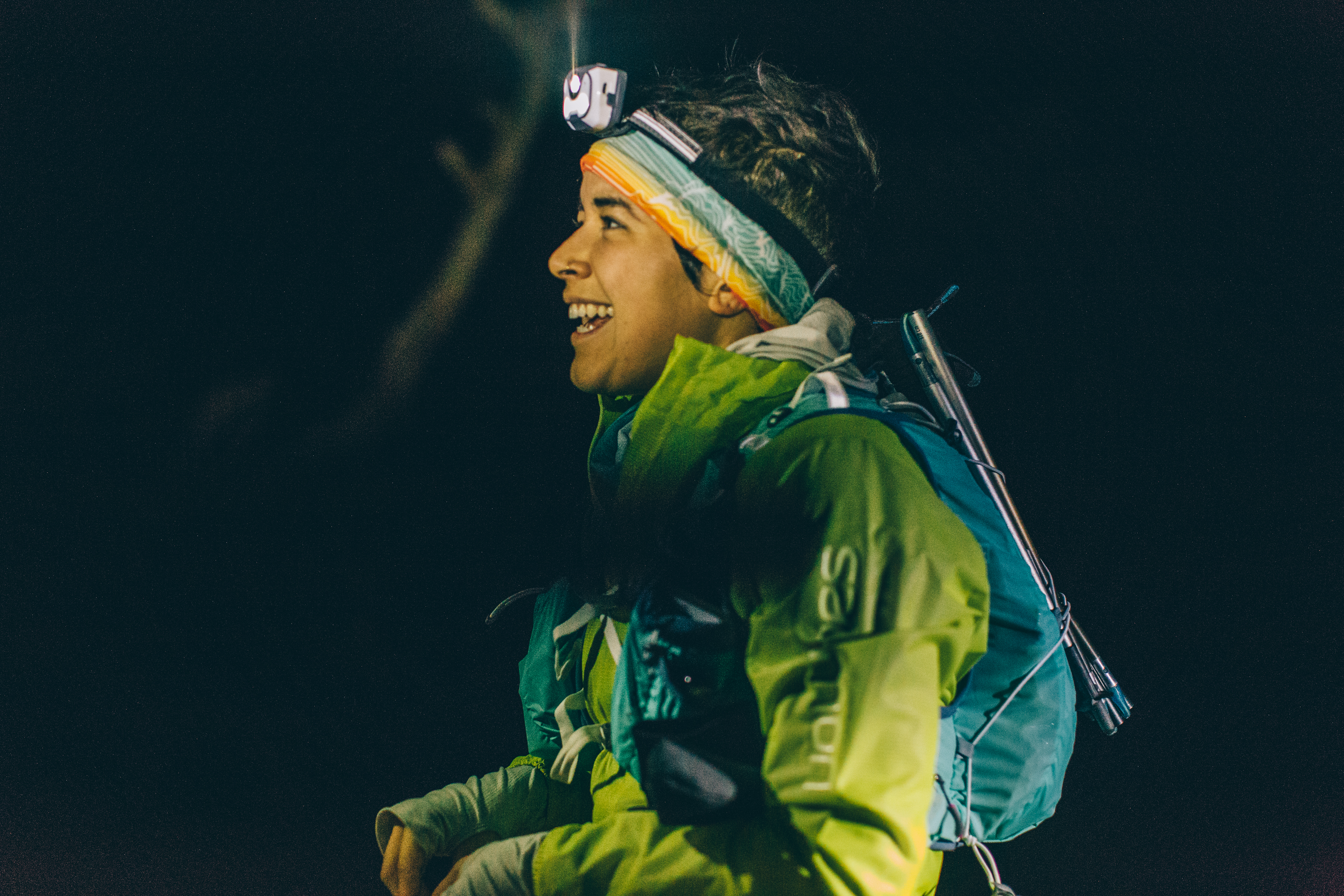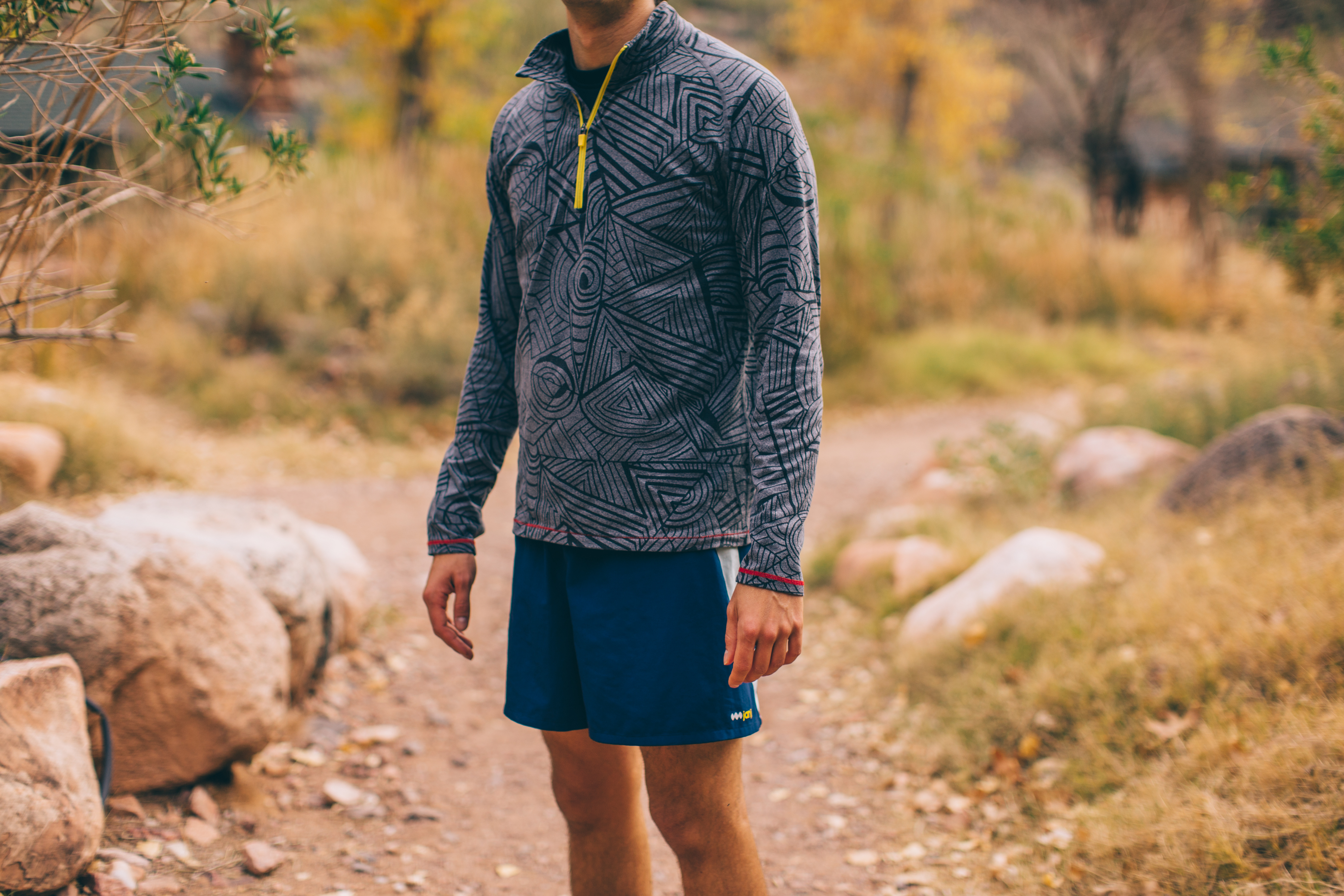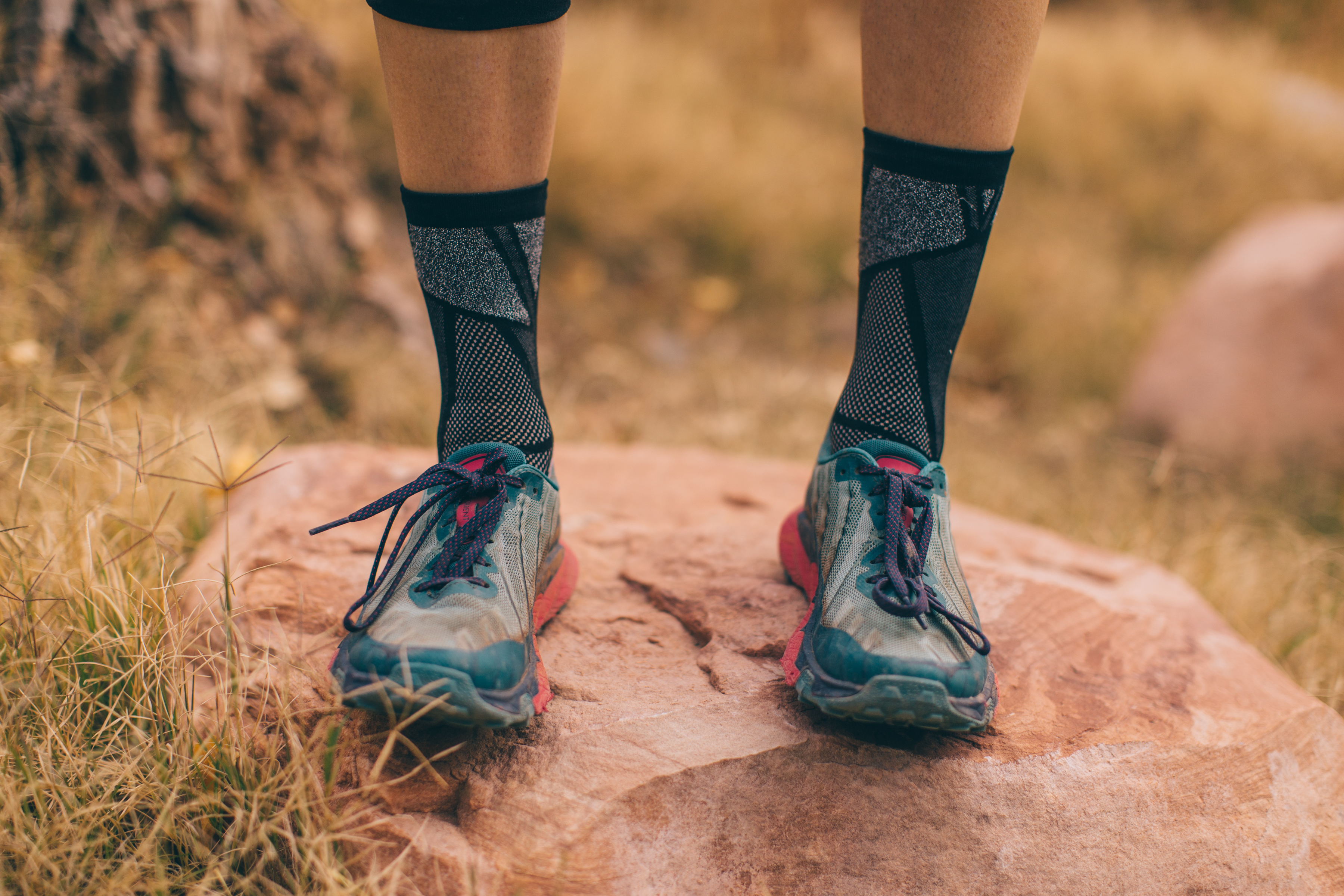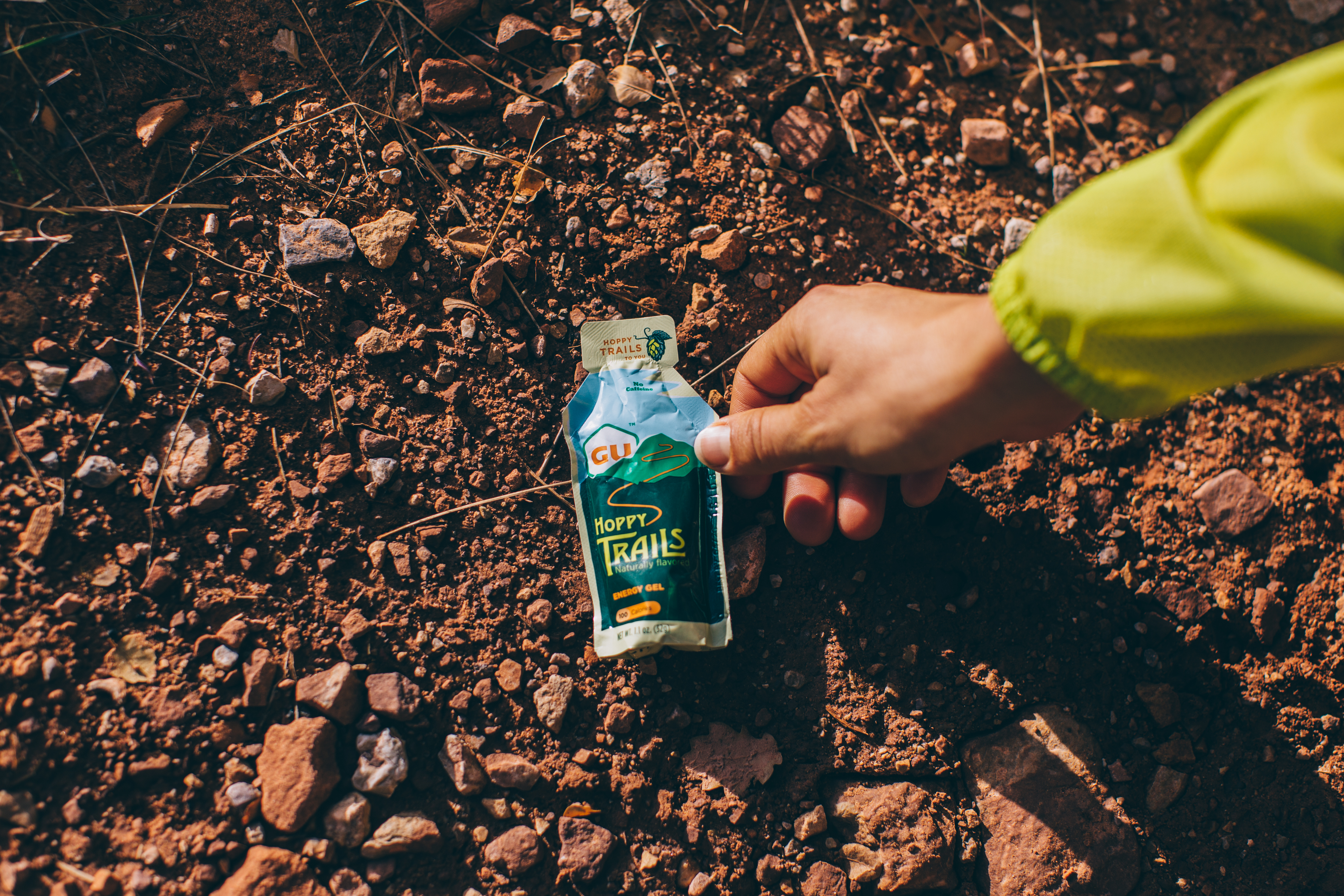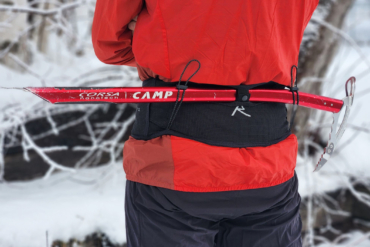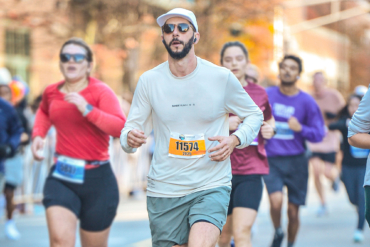I ran 51 miles of steep and dusty Grand Canyon trails to run the Rim-to-Rim-to-Rim in the winter. And I used this gear to do it.
We were 13 miles into the run when the sun first peeked above the canyon wall. Halfway up the climb from the Colorado River toward Cottonwood Campground, we stopped for a snack.
A few hours earlier, the five of us had rolled out of bed, stomached half a bagel and peanut butter, and drove silently to the park visitor center. By 4 a.m. we were running, headlamps illuminating the small stretch of ground in front of us. Our long march across the big ditch — and back — began unceremoniously.

The route is, for better or worse, a standard out-and-back. During the summer, you can bail halfway if needed. But that wasn’t an option for this time of year: The North Rim is closed to cars in the winter due to snow. Further, park officials turn off many of the water faucets to avoid freezing. So a little extra planning — and 3.6 liters in each of our packs — kept us hydrated throughout.
Still, we were excited about our prospects. Forecasters called for temps projected in the 50s during the day. The trail was relatively empty. And we had 11 hours of sunlight to work with.
Not much of a runner? Another option is to backpack the Grand Canyon rim-to-rim-to-rim in the winter!
Of course, completing a 50-mile run with 23,000 feet of elevation takes a lot of training. Although most of us were ramping up for months, we were still wrecked by the end of the Rim-to-Rim-to-Rim.
Completing a run like this also takes the right gear. Below are the key items that helped us get from A to B, and back to A, just in time for dinner!
Rim-to-Rim-to-Rim Race Gear
Hydration Vest: Nathan VaporKrar 12L
I’ve used about a half dozen vests during my decade of consistent trail running, and nothing has fit as snugly or reduced bounce quite like the VaporKrar. Two of my friends, who range in heights from 5’5” to 6’3”, wore the same vest. During training, I would run with minimal gear — a 1.8L bladder and a couple gels — and it functions just like any small-volume pack.
That said, it excels when full. During our Grand Canyon ultra, I loaded it with two water bladders, 2,500 calories’ worth of nutrition, and a spare set of layers and still ran comfortably. Good alternatives to the VaporKrar are the Ultimate Direction Mountain 4.0 or the Salomon S-Lab Sense Ultra 8L.
Headlamp: Nathan Halo Fire
I find most LED headlamps to be basically the same, with minor differences in fit, brightness, comfort, and glove usability. The Halo Fire is on par with most top-tier headlamps — it’s comfortable, water resistant, quite easy to use, and provides over 300 lumens on its brightest setting.
I ran with the Halo Fire on the middle brightness setting, a good balance of light and battery, and had no issues for five-plus hours of use. While I like that it uses a rechargeable battery, I do wish this could be taken out and swapped. Bringing a spare headlamp battery would feel a bit safer to me. To mitigate the risk of lights dying, we carried a separate battery pack and charging cables.
Other high-quality running headlamps include the Petzl Reactik and BioLite HeadLamp.
Trail Shoes: HOKA ONE ONE Torrent
While I typically train in running shoes with more cushion, I decided to use the Torrent, a lighter shoe with a more aggressive tread for this run. This wasn’t an easy call — I nearly went with the Speedgoat 2s, which probably would have helped on the brutal downhills.
But, predicting that we’d get a mix of snow, ice, mud, and dusty trails, I wanted a shoe with great grip and felt fast on my foot — because, I figured, if I couldn’t run 50 miles very fast, I might as well feel like I can. Thus, a compromise was struck, and I laced up the Torrents for this mega run. Other options I mulled over include the HOKA Speedgoat 3 and Altra Lone Peak 4.
Apparel: Janji Uganda 5” Shorts & Latitude ¼ Zip Long Sleeve
Janji, a small Boston-based brand, makes some of my favorite running layers — and the Uganda shorts and Latitude shirt are two of them. The shorts fit and breathe well. The top I only used for the first handful of miles and the last couple, but it was well worth dragging it across the other 40 miles.
It’s warm, soft, and light, making it perfect for running in cool weather. I also love that the brand is dedicated to giving back, giving 5 percent of its revenue to water projects in developing countries. If I’m not wearing Janji, you’ll typically find me on trails with Patagonia Nine Trails Shorts and a Peak Mission Jacket.
Socks: Stance Ht Crew
Comfortable, light, and quick drying, the Ht socks are made with a synthetic fiber that’s great for all kinds of sweaty training, including running across the Grand Canyon. It’s reinforced in the right places and high enough to keep dirt, sand, and dust out of your shoes. Style points, too. My other sock options included Darn Tough and Patagonia Merino Crew.
Nutrition: GU Energy Stroopwafels, Gels, Tabs, and Blocks
One of the biggest challenges of running this far is nutrition. Staying fueled and hydrated isn’t easy because complex fats, proteins, and carbs are hard to digest on the go. Most of our diet for the day was some form of sugar or quick-burning carbohydrate. We relied heavily on the full gamut of products from GU, adding hydration tabs to our water bladders, steadily snacking on gels and blocks every hour, and frequently stopping for communal stroopwafel breaks.
Combined, this gave us the energy to keep moving forward, the amino acids to prevent fatigue, and the electrolytes to replenish what we were sweating out. If GU doesn’t sit well in your stomach, Nuun also makes hydration tabs and Clif makes similar gummy blocks — both great alternatives.
So those are the core pieces of gear that supported my trip. Winter in the Grand Canyon is a special time. If you’re willing to invest in preparation, it’s an incredible adventure that leaves the crowds behind.

